Medieval Saint
Nicholas of Myra: early Christian bishop, who was in the Middle Ages venerated as patron of sailors and protector of blessed marriages (Saint Nicholas). As Sinterklaas, he remains a characteristic figure in Dutch folklore. He is also the historical figure behind Santa Claus.
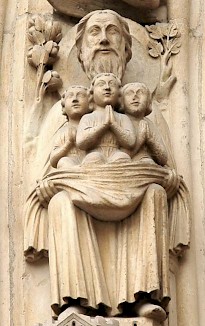
All that we know for certain about Saint Nicholas' earthly existence is that he was bishop of Myra and died on the sixth of December in an unknown year in the fourth century. It is plausible that he once helped poor girls and attended the Council of Nicaea, but beyond this point, we are entering the realm of speculation.
Of course, this has never deterred people from adding stories they found inspiring. In the Middle Ages, new legends were created - and as we will see, the saint has had more recent metamorphoses as well. Some medieval stories sound historically plausible and may even be true, like the story that the good saint had survived the Diocletianic persecution. Because this legend is found in late sources, however, it is not generally accepted as a historical fact.
Other legends are just the normal hagiographic additions and are without any historical value. The most famous example is the story about the three boys: the bishop of Myra had learned about an inn where the cook killed children and offered their meat to his guests. Nicholas discovered a tub with the pickled bodies of three boys and, fortunately, one episcopal blessing was sufficient to restore them to life. It has been argued that this story is derived from a misunderstood picture of the story of the three purses, which were mistaken for the heads of children.
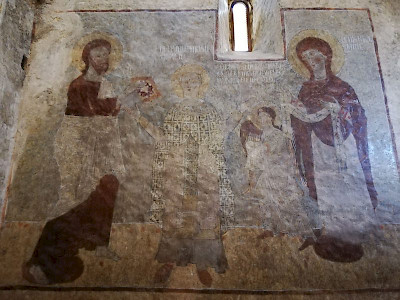
However, the main development of the cult of the saint was that he became the patron of navigation. This comes as no surprise. The pagan patrons of the sailors, the Divine Twins, had for centuries been venerated in Myra. Nicholas overtook some of their temples and those of similar deities.
For example in Rome, an old church of Nicholas stood at a stone's thrown from a shrine of the Lares Permarini on the square that is now known as Largo Argentina. Other churches were newly founded, like the one erected for Nicholas in Constantinople by the emperor Justinian (527-565). The date of its inauguration was celebrated every year.
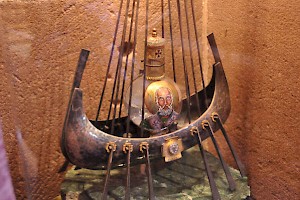
Soon, Nicholas was the most-represented saint on Byzantine seals. After all, the Byzantine empire was largely situated around the eastern Mediterranean, and the protection of navigation was of supreme importance for the state. (He still is the patron of the Greek navy.) When Russia converted to Christianity, it was put under the protection of Saint Nicholas.
His cult was known in the west, but not extremely popular. This changed when the Turks invaded Anatolia after the battle of Manzikert (1071) and captured Myra. The Greeks living in the 'heel' of Italy were worried about the relics of the popular saint, and in 1087, a group of merchants landed at Myra and snatched away his body. (The story is known from several sources but told best by Orderic Vitalis.) On the ninth of May, Nicholas' bones arrived in Bari, a date that has been celebrated ever since as the 'translation' of the saint. Two years later, the new church was inaugurated by pope Urban II, who personally placed the bones in their new tomb beneath the altar. (A couple of years later, he announced the First Crusade.)
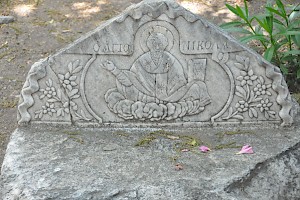
Some bones were brought to a small village named Port, near Nancy in France, which has become another center of the cult of Saint Nicholas. It is now called Saint Nicolas de Port. Other relics were transferred to Worms on the Rhine, by the Byzantine princess Theophanu, wife of the emperor Otto II.
Because the saints' (invented) birthday had also become a day of rejoicing, four days of the ecclesiastical year were now dedicated to Saint Nicholas. A nice Byzantine story explains this exceptional honor. It says that Nicholas was ascending to heaven with another saint, when they heard the prayers of sailors in a storm. The other saint was too occupied with the glory of God to be distracted, but Nicholas immediately returned to earth to help the poor sailors. God rewarded him with not one, but four festivals, whereas his saintly colleague had to be content with only one... 29 February.
After the translation of the relics, Nicholas' popularity spread to the west. Soon, every port belonging to the Hanseatic League, and many others, had a church that was dedicated to the man from Bari. In England alone, nearly 400 churches were dedicated in his honor. When the Vikings settled on Greenland, they built a church for "Nils", and in 1492, Columbus called a port on Haiti after San Nicolas.
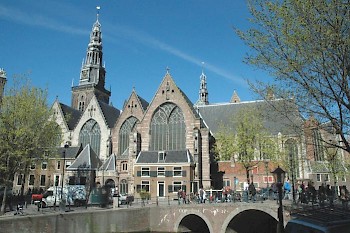
The saint remained of course invoked as protector of navigation, but also as protector of marriage, because he had once given dowries to three girls. In Holland, which plays an important role in the transformation of the cult of this saint, he was lovingly called Goedhuwelijksman, 'good marriage man', a word that was later pronounced as Goedheiligman, which is equally apt, because it means 'good holy man'.
In the west, the cult received some new elements. The legend of the three boys saved from death became more so popular that Nicholas was recognized as patron of children. It was not uncommon to give children presents on his saint's day, 6 December. In Germany, a popular new custom originated: the election of a boy bishop.
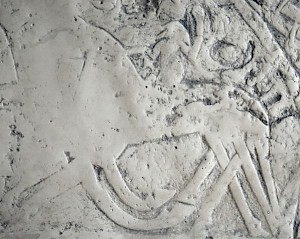
However, the most important development was probably the addition of several elements from ancient Germanic paganism. The ancients had believed that their bearded god Wodan (or Odin) rode over the white clouds on his white horse Sleipnir, carrying a lance, and judging which people were worthy warriors to be allowed to enter the hallowed halls of the Walhalla. The Germanic tribesmen appear to have exchanged presents in December.
This saga was now christianized. As a bishop, Nicholas could easily be represented as a horseman with a bishop's staff. From now on, it was believed that he was judging children's behavior, awarding good children and punishing the bad ones. In Holland it was said that during the night of 5/6 December, the bearded Saint Nicholas and his white horse rode over the snow-covered roofs and threw presents through the chimneys, which the children would find early in the morning, often hid in shoes (cf. the illustration below).
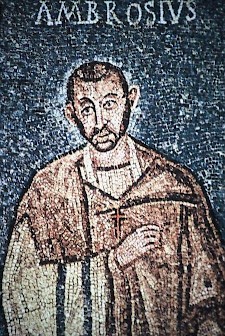
As giver of presents, Nicholas was an important saint. According to the Roman-Catholic church, it is good when the rich unconditionally give to the poor. In fact, it is sometimes argued that they don't give at all. Nicholas' younger contemporary Ambrose of Milan said the following in a sermon on the Old Testamentical scoundrel Naboth.
You are not making a gift of your possessions to the poor person. You are handing over to him what is his. For what has been given in common for the use of all, you have arrogated to yourself. The world has been given to us all, and not only to the rich.note
The church of Rome taught (and teaches) that the rich should not expect something in return nor must they boast of their generosity. This attitude was embodied by the good holy man from Myra.